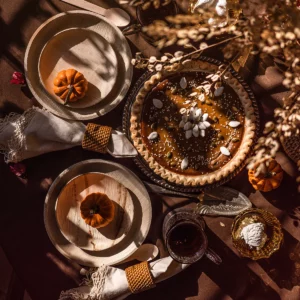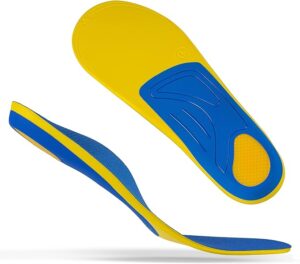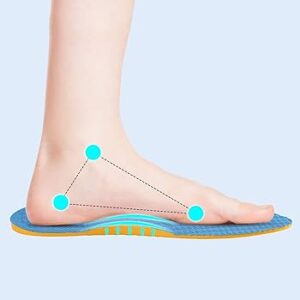
Palm Leaf Plates
In today’s eco-conscious world, sustainable dining choices are gaining more attention and popularity. One such innovative choice is the use of palm leaf plates, which not only offer a unique and aesthetic dining experience but also contribute to a greener environment. In this article, we will explore the wonders of palm leaf plates, their benefits, manufacturing process, and why they are becoming the preferred choice for eco-friendly dining.
Introduction
Sustainability has become a buzzword in recent years, and people are actively seeking ways to reduce their carbon footprint. One such sustainable choice gaining momentum in the dining industry is the use of palm leaf plates. These plates not only provide an eco-friendly alternative but also add an elegant touch to your dining experience.
What Are Palm Leaf Plates?
Palm leaf plates, also known as palm plates or areca plates, are a type of dinnerware that is crafted from fallen palm leaves. The process begins with the collection of naturally shed palm leaves, which are then thoroughly cleaned to remove any impurities. After cleaning, these leaves are heat-pressed into various plate shapes and sizes.
What sets palm leaf plates apart is their remarkable eco-friendliness. These plates are entirely biodegradable and compostable, making them an excellent choice for those who are environmentally conscious. When disposed of, palm leaf plates naturally decompose, enriching the soil with essential nutrients. This is in stark contrast to conventional plastic or styrofoam plates, which can linger in landfills for centuries, causing harm to the environment.
Moreover, the production process of palm leaf plates is highly sustainable. It requires minimal energy and water, reducing the overall carbon footprint when compared to the manufacturing of traditional plates. Additionally, palm leaf plates are entirely free from harmful chemicals or additives. This means that when you use these plates to serve your food, you can do so with confidence, knowing that no toxins or contaminants will leach into your meals.
In summary, palm leaf plates offer a sustainable and eco-friendly alternative to traditional dinnerware. They are not only biodegradable and compostable but also produced through a process that minimizes environmental impact. By choosing palm leaf plates, you not only enhance your dining experience with their unique and rustic aesthetic but also contribute to a cleaner and greener planet.
The Eco-Friendly Advantages
Palm leaf plates offer a host of eco-friendly advantages that make them a preferred choice for conscientious consumers. Here’s a closer look at these benefits:
1. Biodegradability and Compostability
One of the standout features of palm leaf plates is their complete biodegradability and compostability. When you dispose of palm leaf plates, they break down naturally over time, returning to the earth without leaving behind harmful residues. This is in stark contrast to traditional plastic or styrofoam plates, which can take hundreds of years to decompose and contribute to landfill pollution.
2. Reduced Carbon Footprint
The production of palm leaf plates is notably eco-conscious. It requires minimal energy and water compared to the resource-intensive processes involved in making conventional plates. This reduced resource usage translates into a smaller carbon footprint, making palm leaf plates an environmentally responsible choice.
3. No Harmful Chemicals
Palm leaf plates are made without the use of harmful chemicals or additives. As a result, they are entirely free from toxins and contaminants that can potentially leach into your food. This ensures that your meals remain pure and uncontaminated, promoting a healthier dining experience.
4. Sustainable Sourcing
The raw material for palm leaf plates—fallen palm leaves—is sourced sustainably. These leaves are collected after they have naturally fallen from palm trees, which means that the harvesting process does not harm or endanger the trees themselves. This sustainable sourcing further contributes to the eco-friendliness of palm leaf plates.
5. Support for Local Communities
Many palm leaf plate production operations are small-scale and community-based. By choosing palm leaf plates, you may also be supporting local artisans and communities engaged in this environmentally friendly craft.
In conclusion, palm leaf plates offer a comprehensive set of eco-friendly advantages. They are biodegradable, compostable, and produced with minimal environmental impact. Additionally, they are free from harmful chemicals and support sustainable sourcing practices. Choosing palm leaf plates is not just a choice for stylish and eco-conscious dining but also a meaningful step towards a greener and cleaner planet.
The Manufacturing Process
The production of palm leaf plates is a remarkably simple yet environmentally friendly process that transforms fallen palm leaves into elegant and eco-conscious dinnerware. Here’s a step-by-step look at how palm leaf plates are crafted:
1. Leaf Collection
The process begins with the collection of naturally fallen palm leaves. These leaves are typically gathered from palm groves, where they have shed naturally due to the tree’s growth cycle. No trees are harmed in this process, ensuring a sustainable and eco-friendly raw material source.
2. Cleaning and Sterilization
Once collected, the palm leaves undergo a thorough cleaning and sterilization process. This step ensures that any dirt, debris, or impurities are removed from the leaves. It also helps in eliminating any potential contaminants, making the plates safe for serving food.
3. Heat Pressing
After cleaning, the palm leaves are subjected to heat pressing. This is a crucial step where the cleaned leaves are placed in molds of various plate shapes and sizes. The heat and pressure applied during this process help shape the leaves into the desired plate forms. No chemicals or additives are used in this step, maintaining the plates’ organic and natural properties.
4. Trimming and Shaping
Following the heat pressing, any excess material is trimmed, and the plates are given their final shape. This meticulous trimming ensures that each plate is uniform and aesthetically pleasing.
5. Quality Control
Before they are ready for distribution, palm leaf plates undergo a rigorous quality control process. This involves inspecting each plate for any imperfections or defects. Plates that do not meet the stringent quality standards are discarded.
6. Packaging
Once the plates pass quality control, they are carefully packaged for distribution. Packaging is usually done using eco-friendly materials, aligning with the sustainability principles of palm leaf plates.
7. Ready for Use
Finally, the palm leaf plates are ready for use. They are shipped to various retailers, restaurants, and individuals who appreciate their eco-friendly and aesthetic qualities. These plates can be used for a wide range of dining occasions, from casual meals to formal gatherings.
In summary, the manufacturing process of palm leaf plates is a sustainable and straightforward journey from fallen leaves to elegant dinnerware. The process embraces eco-conscious principles, ensuring that each plate is not only visually appealing but also environmentally responsible. By choosing palm leaf plates, consumers contribute to a cleaner planet while elevating their dining experience.
Palm Leaf Plates vs. Traditional Plates
When it comes to choosing dinnerware, the decision between palm leaf plates and traditional plates is more than just a matter of aesthetics. It involves considerations of sustainability, environmental impact, and functionality. Here’s a comprehensive comparison between the two:
1. Eco-Friendliness
- Palm Leaf Plates: These plates are the clear winners in terms of eco-friendliness. Made from fallen palm leaves, they are biodegradable and compostable. They decompose naturally, enriching the soil, and leave behind no long-lasting waste.
- Traditional Plates: Traditional plates, typically made of materials like ceramic, glass, or plastic, are not as eco-friendly. Ceramic and glass plates are not biodegradable and can be heavy to transport, increasing their carbon footprint. Plastic plates, on the other hand, are known for their environmental harm due to their non-biodegradable nature and potential to release harmful chemicals.
2. Manufacturing Process
- Palm Leaf Plates: The manufacturing process of palm leaf plates is simple and environmentally friendly. It involves minimal energy and water use, with no harmful chemicals or additives involved. The sourcing of raw materials is sustainable since only fallen palm leaves are used.
- Traditional Plates: The production of traditional plates often involves resource-intensive processes. Ceramic and glass plates require high-temperature firing in kilns, consuming substantial energy. Plastic plates are derived from petroleum-based materials, contributing to environmental pollution.
3. Durability
- Palm Leaf Plates: Palm leaf plates are surprisingly sturdy and can handle a variety of hot and cold foods without losing their shape or integrity. However, they are intended for single-use.
- Traditional Plates: Traditional plates made of ceramic or glass are durable and can last for many years with proper care. Plastic plates, while less durable, are often reusable for a longer duration.
4. Aesthetic Appeal
- Palm Leaf Plates: Palm leaf plates have a unique and rustic aesthetic appeal. Their natural texture and earthy tones add a touch of elegance to the dining experience, making them suitable for both casual and formal occasions.
- Traditional Plates: Traditional plates come in various designs and styles, allowing for a wide range of aesthetic choices to match different dining settings.
5. Convenience
- Palm Leaf Plates: Palm leaf plates are lightweight and easy to transport, making them convenient for outdoor events and picnics. They are also microwave and oven-safe to a certain extent.
- Traditional Plates: Traditional plates can be heavier and less portable. Ceramic and glass plates, in particular, are prone to breakage during transport.
In conclusion, the choice between palm leaf plates and traditional plates depends on individual preferences and priorities. Palm leaf plates stand out for their eco-friendliness, sustainability, and unique aesthetic appeal, making them an excellent choice for those looking to reduce their environmental impact while enjoying an elegant dining experience. Traditional plates, on the other hand, offer durability and a wide variety of design options. Ultimately, the decision boils down to a balance between style, sustainability, and functionality in your dining choices.
Where to Find Palm Leaf Plates
The popularity of palm leaf plates has been on the rise due to their eco-friendliness and unique aesthetic appeal. If you’re interested in incorporating these sustainable dining options into your lifestyle, here are some common places where you can find palm leaf plates:
1. Online Retailers
Numerous online retailers specialize in eco-friendly and sustainable products, including palm leaf plates. Popular e-commerce platforms like Amazon, eBay, and Etsy feature a wide range of options from various brands and sellers. You can easily browse and purchase palm leaf plates that suit your preferences and needs from the comfort of your home.
2. Eco-Friendly Stores
Many physical stores dedicated to eco-friendly and sustainable products carry palm leaf plates. These stores often stock a variety of environmentally conscious dinnerware options, making it convenient for you to explore and choose the right plates for your dining needs.
3. Specialty Home and Kitchen Stores
Some specialty home and kitchen stores may carry palm leaf plates in their inventory. It’s worth checking with stores that focus on unique and eco-conscious dining solutions, as they are likely to have these plates available for purchase.
4. Local Farmers’ Markets
In some regions, you may find palm leaf plates being sold at local farmers’ markets or artisanal markets. These markets often feature handmade and sustainable products, and palm leaf plates may be among the offerings from local artisans or environmentally conscious vendors.
5. Online Sustainable Marketplaces
There are online marketplaces specifically dedicated to sustainable and eco-friendly products. Websites like EarthHero and The Ultimate Green Store curate a selection of environmentally responsible items, including palm leaf plates, making it convenient for environmentally conscious shoppers.
6. Wholesale Suppliers
If you require palm leaf plates in bulk for events, catering, or business purposes, you can explore wholesale suppliers and distributors. Many suppliers offer bulk purchasing options at competitive prices.
7. Local Artisan Workshops
In regions where palm leaf plates are produced, you may have the opportunity to visit local artisan workshops. These workshops often offer direct sales, allowing you to purchase palm leaf plates while supporting local craftsmanship.
When purchasing palm leaf plates, it’s essential to consider factors such as the quantity needed, the specific style or size required, and your budget. Additionally, look for certifications or labels that indicate the plates’ eco-friendliness and adherence to quality standards. By choosing palm leaf plates, you not only contribute to sustainability but also elevate your dining experience with their natural and rustic charm.
The Aesthetic Appeal
Palm leaf plates are more than just eco-friendly dinnerware; they are a testament to nature’s artistry and an embodiment of rustic elegance. Their unique aesthetic appeal adds a touch of charm and sophistication to any dining occasion. Here’s why palm leaf plates are gaining popularity for their visual allure:
1. Natural Texture and Patterns
Palm leaf plates retain the natural texture and patterns of the leaves from which they are crafted. This organic quality gives each plate a one-of-a-kind appearance, making every meal a visually captivating experience. The intricate veins and imperfections of the palm leaves add character and depth to the plates, creating a sense of authenticity that is hard to replicate.
2. Earthy Tones
The earthy, warm tones of palm leaf plates complement a wide range of culinary creations. Whether you’re serving a vibrant salad, a sumptuous curry, or a delicate dessert, these plates provide a neutral backdrop that enhances the presentation of your dishes. The natural hues of palm leaf plates harmonize beautifully with colorful, textured, and aromatic foods.
3. Rustic Elegance
Palm leaf plates strike a harmonious balance between rustic charm and elegant simplicity. This versatility allows them to fit seamlessly into various dining settings, from casual outdoor picnics to formal dinner parties. The plates’ natural appeal adds a touch of sophistication to even the simplest of meals.
4. Size and Shape Variety
Palm leaf plates are available in a variety of sizes and shapes, catering to diverse dining needs and aesthetics. Whether you prefer round plates, square plates, or uniquely shaped designs, you can find palm leaf plates that align with your style and culinary preferences. This diversity makes them suitable for a wide range of dining occasions.
5. Customization Options
For those looking to add a personal touch to their dining experience, some artisans and manufacturers offer customization options. You can have your logo, monogram, or design embossed or engraved on palm leaf plates, making them perfect for special events, weddings, or corporate gatherings.
6. Conversations Starter
The distinctive appearance of palm leaf plates often becomes a conversation starter at social gatherings. Guests are intrigued by their unique texture and earthy beauty, leading to discussions about sustainability and eco-conscious dining choices.
In summary, palm leaf plates are a visual delight that elevates the dining experience. Their natural texture, earthy tones, and rustic elegance make them a popular choice for those who appreciate the aesthetics of their tableware. Beyond their eco-friendliness, these plates offer a touch of nature’s artistry to every meal, creating a memorable and visually appealing dining ambiance.
Are Palm Leaf Plates Safe?
Palm leaf plates are inherently safe for serving food, and they offer several advantages in terms of food safety:
1. Chemical-Free
Palm leaf plates are produced without the use of any harmful chemicals or additives. This means that they do not contain synthetic dyes, bleaches, or coatings that can potentially leach into your food. You can serve your meals on palm leaf plates with confidence, knowing that your food remains pure and uncontaminated.
2. Natural Material
These plates are crafted from natural and organic materials—fallen palm leaves. Since the manufacturing process does not involve any artificial substances, there is no risk of chemical contamination from the plates themselves.
3. Heat Resistance
Palm leaf plates are heat-resistant to a certain extent, making them suitable for serving hot foods. They can handle the heat from freshly cooked dishes without warping or releasing harmful fumes. This feature ensures that your food remains safe to eat even when served piping hot.
4. Sturdiness
Palm leaf plates are surprisingly sturdy and can hold both hot and cold foods without breaking or deforming. Their durability means that there is no risk of the plates breaking or shattering during use, minimizing the chances of food contamination due to plate breakage.
5. Non-Reactive
Palm leaf plates are non-reactive, which means they do not interact with acidic or alkaline foods. This characteristic ensures that the taste, texture, and quality of your food remain unchanged when served on these plates.
6. Compliance with Safety Standards
Reputable manufacturers of palm leaf plates adhere to safety and quality standards. They ensure that their products are manufactured under hygienic conditions and are free from contaminants. When purchasing palm leaf plates, look for certifications or labels that indicate their compliance with safety standards.
In summary, palm leaf plates are a safe and eco-friendly choice for serving food. They are chemical-free, heat-resistant, and non-reactive, which means they do not pose any health risks when used for dining. Whether you’re serving a casual family meal or hosting a special event, you can rely on palm leaf plates to provide a safe and natural backdrop for your culinary creations.
Sustainable Dining: A Growing Trend
In recent years, sustainable dining has evolved from a niche concept to a mainstream trend that is reshaping the culinary landscape. As more people become aware of the environmental impact of their food choices, the demand for sustainable dining options has surged. Here’s a closer look at why sustainable dining is a growing trend and how it is transforming the way we eat:
1. Environmental Awareness
One of the primary drivers of sustainable dining is heightened environmental awareness. People are increasingly concerned about issues such as climate change, deforestation, and plastic pollution. As a result, they are seeking ways to reduce their carbon footprint and make eco-conscious choices in every aspect of their lives, including dining.
2. Support for Local and Organic
Sustainable dining often involves supporting local farmers and producers who use organic and sustainable farming practices. Consumers are becoming more conscious of where their food comes from and are choosing locally sourced, organic ingredients to reduce the environmental impact of long-distance transportation and harmful farming practices.
3. Reducing Food Waste
Minimizing food waste is a key component of sustainable dining. People are learning to plan their meals, use leftovers creatively, and compost food scraps to reduce the amount of food that ends up in landfills. Restaurants are also adopting practices to reduce food waste, such as offering smaller portion sizes and repurposing surplus ingredients.
4. Eco-Friendly Packaging
Sustainable dining extends beyond food choices to the packaging used for takeout and delivery. Many restaurants are switching to eco-friendly packaging options, such as compostable utensils, biodegradable containers, and, of course, palm leaf plates, to reduce the environmental impact of single-use plastics.
5. Plant-Based and Vegetarian Options
The popularity of plant-based and vegetarian diets is on the rise, driven by concerns about animal welfare, health, and the environment. Restaurants are expanding their menus to include a wide variety of plant-based dishes to cater to the growing number of customers seeking sustainable and cruelty-free dining options.
6. Sustainable Seafood Choices
Seafood sustainability is another significant aspect of sustainable dining. Consumers and restaurants are increasingly selecting seafood options that are certified as sustainable by organizations like the Marine Stewardship Council (MSC) or the Aquaculture Stewardship Council (ASC).
7. Eco-Friendly Dining Practices
Restaurants and food service establishments are adopting sustainable practices, such as energy-efficient appliances, waste reduction, and responsible sourcing. Many are also engaging in initiatives like carbon offset programs to further reduce their environmental footprint.
8. Consumer Demand
Ultimately, sustainable dining is a response to consumer demand. People are actively seeking out restaurants and food products that align with their values and environmental concerns. As this demand continues to grow, businesses in the food industry are recognizing the importance of incorporating sustainability into their practices.
In conclusion, sustainable dining is more than just a passing trend; it is a fundamental shift in the way we approach food consumption. It reflects a deeper understanding of the interconnectedness between our food choices and the health of our planet. As sustainable dining practices become more accessible and widespread, they offer hope for a greener and more environmentally conscious future in the world of food and dining.
Conclusion
Palm leaf plates are more than just a dining accessory; they are a statement of eco-consciousness and style. By choosing these biodegradable and compostable plates, you contribute to a cleaner planet while enjoying a unique and aesthetic dining experience.
FAQs
Q1. Where can I purchase palm leaf plates?
You can find palm leaf plates online on various eco-friendly retailers’ websites or in select stores that promote sustainable dining options.
Q2. Are palm leaf plates durable?
Yes, palm leaf plates are surprisingly sturdy and can handle hot and cold foods without losing their shape or integrity.
Q3. Can I reuse palm leaf plates?
While palm leaf plates are designed for single-use, some people choose to rinse and reuse them for lighter meals.
Q4. Are palm leaf plates suitable for large gatherings?
Absolutely! Palm leaf plates are available in various sizes, making them perfect for any event, from intimate gatherings to large parties.
Q5. Can I compost palm leaf plates at home?
Yes, you can. Palm leaf plates are compostable and will break down naturally in your home compost bin, enriching your soil.
In conclusion, palm leaf plates offer a sustainable and stylish solution to traditional dining ware. By choosing these eco-friendly alternatives, you contribute to a greener planet while elevating your dining experience. So, why wait? Embrace the green and clean dining revolution today!







